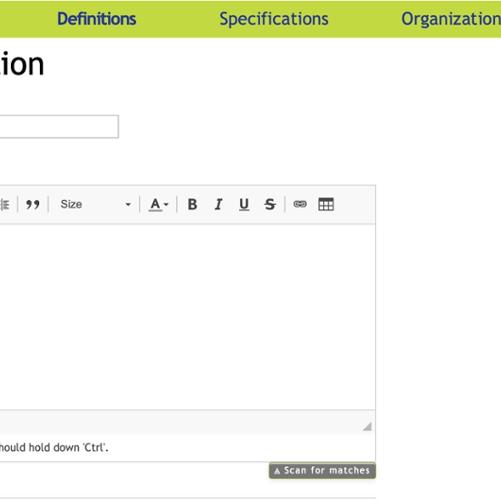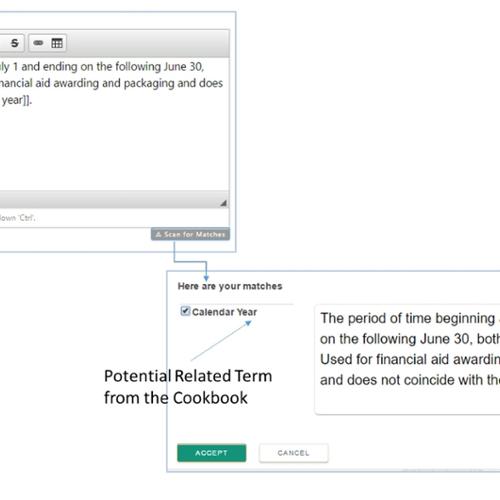Data Catalog Functional Definition Best Practices
Functional Definition Best Practices
- The person using the definition is NOT YOU. You are writing for someone who does not have inside knowledge about the topic.
- Do not use acronyms or jargon
- A definition should be unique and distinguishable from every other data element definition.
- A data definition should be precise, concise, and unambiguous. The definition should be clear enough to allow only one possible interpretation.
- The data definition should be expressed in the singular. Example, define “Transaction”, not “Total Transactions”, or “Class” not “Classes”.
- It should describe how the data element is used.
- It should include additional information such as:
- Cautions, context, common misinterpretations
- Historical changes in values or use
- How it can be sorted or grouped
- Links to other related Data Cookbook definitions (see image)
- Comments regarding permission, security limitations if applicable.
- Use the SCAN FOR MATCHES button to find existing definitions
- If a match is found, the accept button will link the two.
- If the match return is null, use double brackets [[ ]] around the word(s) that need to be in the catalog. See example below.


Tags
None found.
Last updated: July 29, 2025
Contact
Team Name
Business Intelligence and Web Services
Office Location
Burke Library
198 College Hill Road
Clinton, NY 13323
198 College Hill Road
Clinton, NY 13323
Phone
Email
